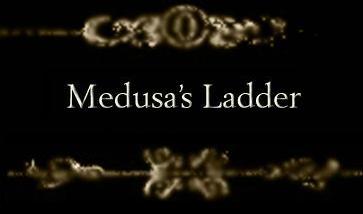|
|
|
|
|
|
|


|
6.12.9
Occult Exchanges: Manga, Lolita Fashion, and the Bomb I think of myself as pretty liberal when it comes to fashion and general aesthetic sensibilities. I remember, even as a pre-teen, knowing I would never, no matter how old I got, think contemporary fashions and notions were outrageous, or just 'weird.' I was confident that I would always have at least an appreciation for youthful sensibilities of visual expression, especially in relation to fashion.
Of course, neither did I consider that the subjects being codified by fashion might be objectional, unsavory, threatening, unpleasant, highly complex and meaningful, or just no fun to consider, in themselves. Also, that the "distance," factor is not necessarily just the passage of time, but that age/generational notions themselves could be part of the equation, a setting apart, that serves as some type of veil of sensibility, for better or worse. With this in mind, it's easy to see how the fashions of younger generations are generally met with scorn by the aging generations. Perhaps it is not just the aesthetic that is displeasing, but the subtextual, occult meanings—the underlying experiences, dynamics, and controversies from which the fashion is born. For example, the fashion of the androgynous 1980s, with all its classical Romanticism, were no doubt an open, mass statement about gender and sexual identity, which, a quarter century later are just now finally becoming formally addressed within the gay marriage civil rights issues.
Japan is influential in fashion and trend as well. Go look at any My Space, Flickr, or Facebook page of 'cool' prepubescent-early 20s kids, and you will find self images, portraits, photographs that are unlike those of any other era, and completely identifiable to the contemporary—they are highly codified. The standard is this: a largely androgynous, very youthful looking person, head tilted down, looking up, usually with just one exaggeratedly widely opened eye showing, the other covered by straight, smooth long bangs. There is usually a pouty expression, and never a smile. There is an overall sense of childlike vulnerability, even approaching a sense of shame. It is important to note that the images are usually self-portraits, taken by the subject, holding a camera up and out at arms' length. The importance lies in the idea that the expression and pose captured is an affectation, and purposeful self-representation, rather than an organic moment caught on film. Oftentimes, in photos showing more than the face of the subject, there is writing somewhere in the photo, either on a hand, wrist, inner forearm, or just placed in with Photoshop. The words usually correspond to the emotional state of the subject, and are often provocative, or expressive of angst. This graffiti aspect of the images may be a take on the widely popular Japanese of purikura phenomenon, in which photo booth pictures are manipulated, modified, and shared, to commemorate mundane social activities and friendships between girls. It seems to be more than a fad, and its significance in the lives of Japanese girls has been duly noted. Going back to the self-portrait photos, the overall visual seems to have an anime or manga style visual quality. Large expressive eyes, big heads. The classic commentary about the Japanese animation look is that it caricaturizes European facial features, such as rounded eyes and heads, in the same way that American-created cartoons of Asian characters depicted triangle shaped faces, and exaggerated, angled slits as eyes. Also, the popularity and emergence of manga itself has large ties with the American occupation of Japan associated with World War II. Japanese/American, Eastern/Western dynamics are simply hardwired into the genre. This anime/manga look is also present with many internet personal avatars, such as the create-your-own Yahoo! avatar. The wide-eyed, childlike vulnerability that is present within Anime art is now being marketed to and embraced by its models, American youth—perhaps the first American generation to be taught a more holistic and truthful story about the Japanese and American actions and responses that occurred in World War II. Perhaps I was out sick that day, or just had an unusually exclusive, Wonder Bread early education (which is quite possible, in 1970s Topeka, Kansas), but I do not recall my elementary school history books even mentioning concentration camps in this country. Is there an apologist nature present in the adoption of the anime style avatars and self-portraits by Young Americans? If there is anything to this, art (I suppose that is what fashion, anime, and photos boil down to) being used in such a way—cross-cultural therapy, communication about identity—is not surprising. However, it is interesting in that it seems a completely organic, unconscious, unintentional collective effort and effect. Sources and further reading:
Photo credits:
Visit Richelle's blog: Beamships Equal Love
|